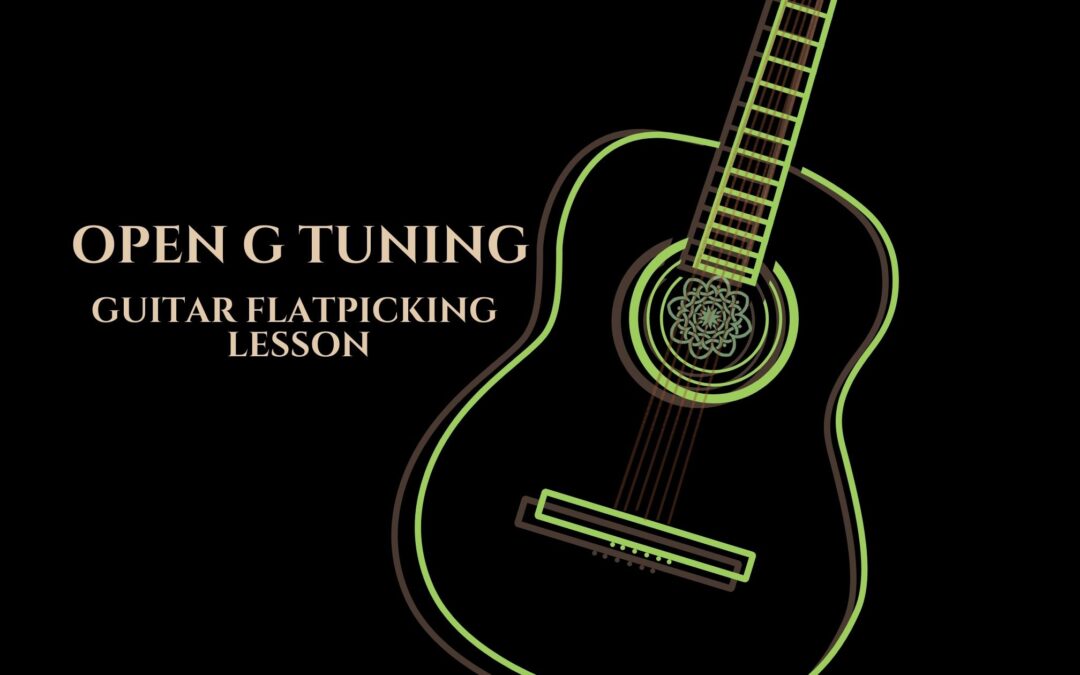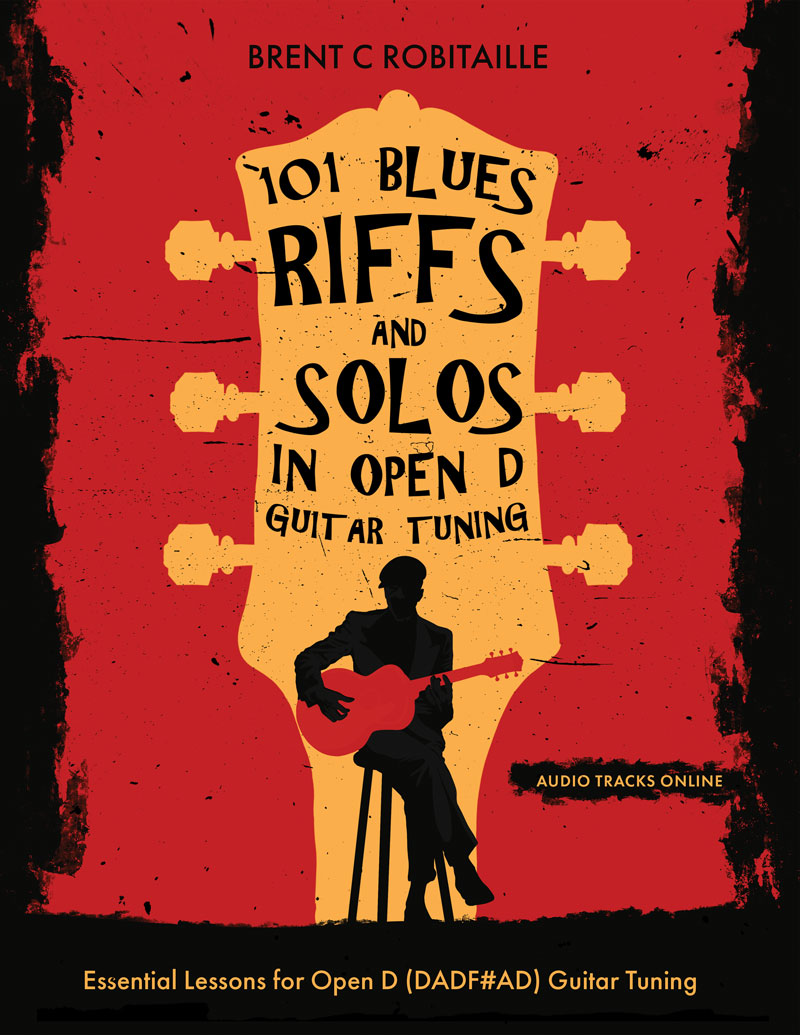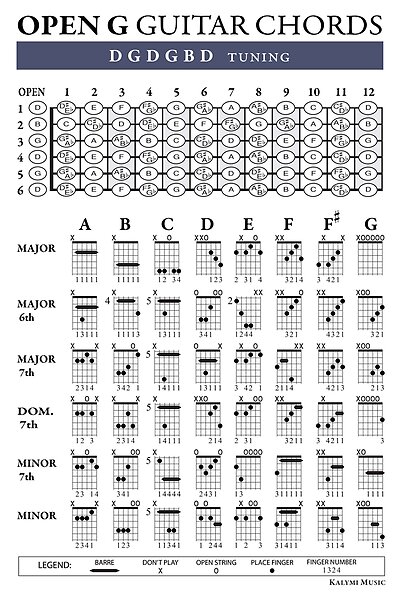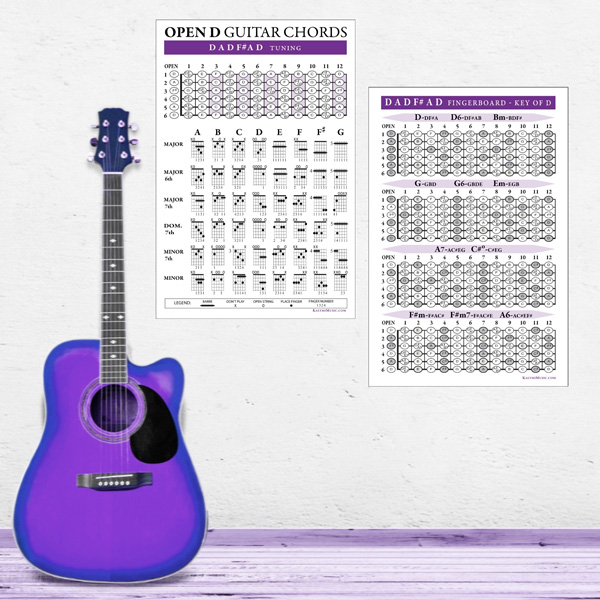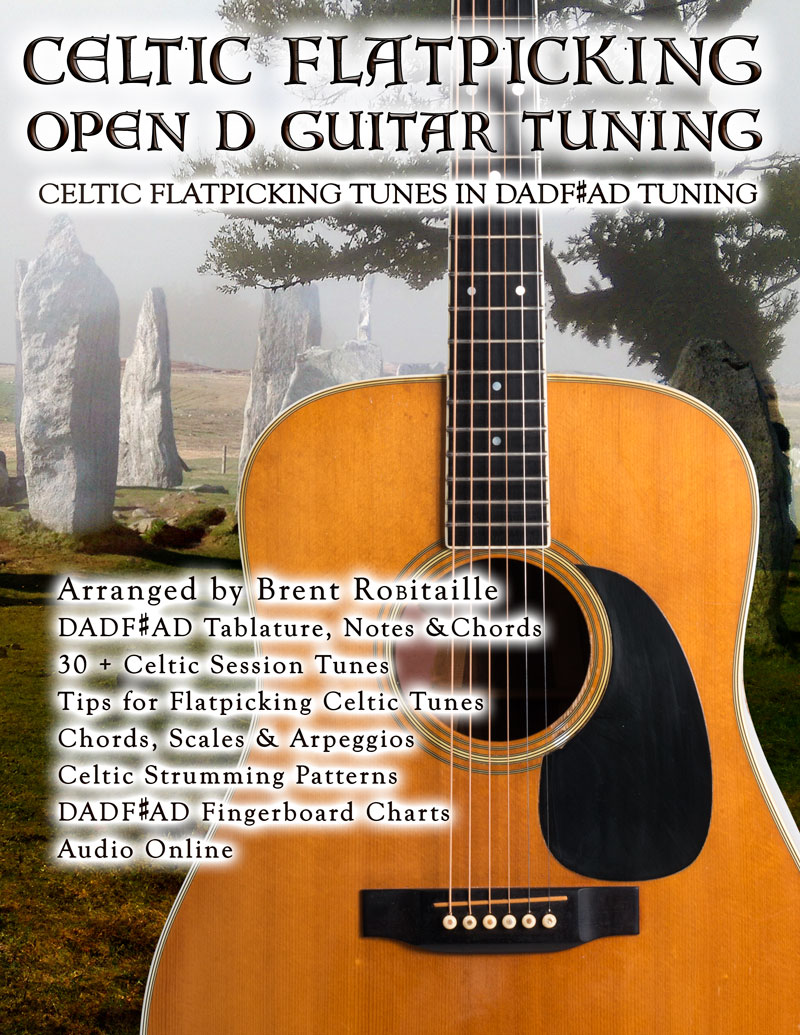Tune your guitar to open G, grab your favourite pick and learn two Celtic tunes in today’s free guitar lesson. Both tunes from today’s lesson are available in my book Open G Tuning Celtic Guitar Flatpicking.
How to tune to Open G Guitar Tuning
First off, the guitar tuning for open G is D-G-D-G-B-D. If you are unfamiliar with this altered tuning, I suggest using an electronic tuner. Eventually, you will be able to tune into open G by ear as you become accustomed to the sound of the open G chord.
Start by lowering the 6th, 5th and 1st strings down a whole tone if you are in standard guitar tuning. I turn the tuning pegs approximately half of a turn to get into tune.
The arrows show you which strings to tune lower from standard guitar tuning:

Ok, you are tuned up and ready to learn a couple well-known Celtic session tunes. Read this post here to discover 12 tips for Flatpicking Celtic guitar.
To learn a 12 bar blues chord progression with Open D chords check out this post here.
Morrison’s Jig Lesson in Open G Tuning
The first tune we play is called “Morrison’s Jig.” This tune is very popular at the pubs and has been recorded many times. As it is a jig, the time signature is 6/8. This jig is traditionally played in Em, but I found Dm a bit easier to play in open G tuning. If you need to play it in Em, just grab your capo and put it on the 2nd fret.
Here’s the recording below:
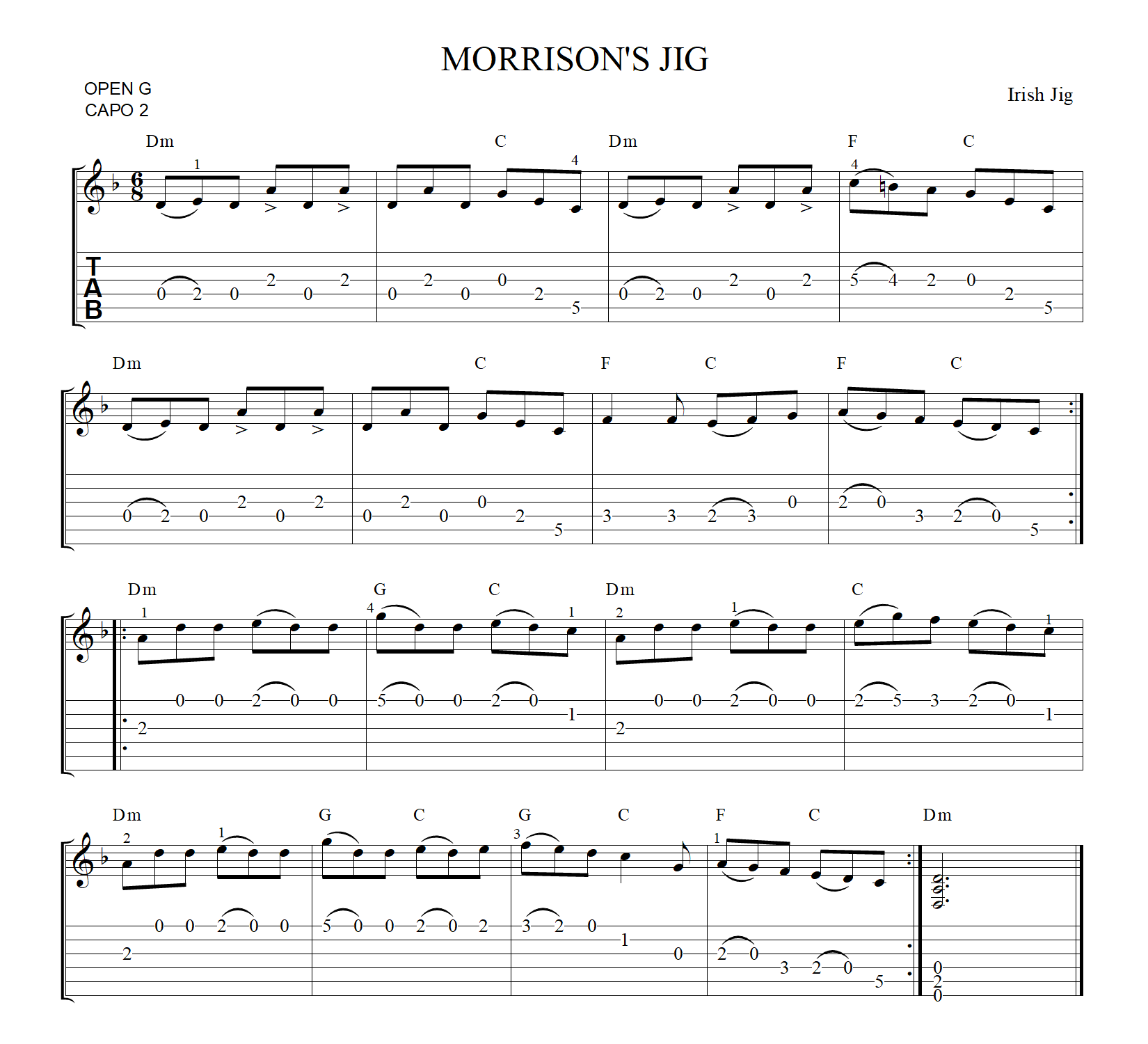
Pull offs and Hammer-Ons
Let’s have a closer look. This jig is in the D Dorian mode. So, the notes used are D E F G A B C. In the first section or “A” part, you will see quite a few hammer-ons and pull-offs. This is a great tune to work on your hammer-ons and pull-offs. Play through slow with the intention of articulating clear eighth notes.
Often, students will play the hammer-ons and pull-offs too fast, creating an uneven rhythm. In this case, you need to keep the eighth notes even. Meaning, 1 2 3 4 5 6. A clear note on each beat.
Fingering and Accents
Notice the accents ( < )in measure one. There is an accent on the 4 and 6th beat. If you start with a downstroke, you will play beat 4 with a downstroke, 5 with an upstroke, and 6 with a downstroke. In other words, use alternate picking.
Some exciting fingerings in the second section raise the technical level, so again, play very slowly until you have all the fingerings sorted out. The finger numbers are all in the top notation line beside the notes.
This piece is played in position two on the guitar, meaning your first finger will be on the second fret. However, you will see in the second part of Morrison’s Jig that you will need to switch between positions one and two.
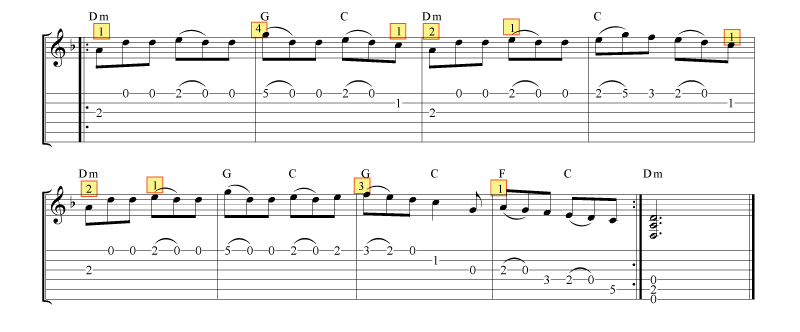
Let Notes Ring
There is an unwritten rule in guitar music to let the notes ring where possible. Of course, this isn’t always the case, but you can simulate a harp-like sound in open G by allowing the open notes to ring and overlap. The sound is like a piano when you hold down the sustain pedal, and the notes all ring together. On the guitar, this overlapping sound is called Campanella.
Use a healthy amount of hammer-ons, pull-offs and ornamentation to create variety and a smooth legato sound. The low-pitched open strings are also perfect for creating drones, not unlike the sound of bagpipes. Generally, try to let the open notes ring by holding your fingers down on the fretboard as long as possible.
Alright, hopefully, you can work on this tune and get it up to speed before long. Let’s move on to one of Scotland’s most famous songs.
Loch Lomond in Open G Tuning
This arrangement of Loch Lomond uses a chordal melody style combining the melody and chords together.
The melody is always the most important note and should be heard above the accompanying chords. I suggest learning just the single note melody first to clearly hear the tune.
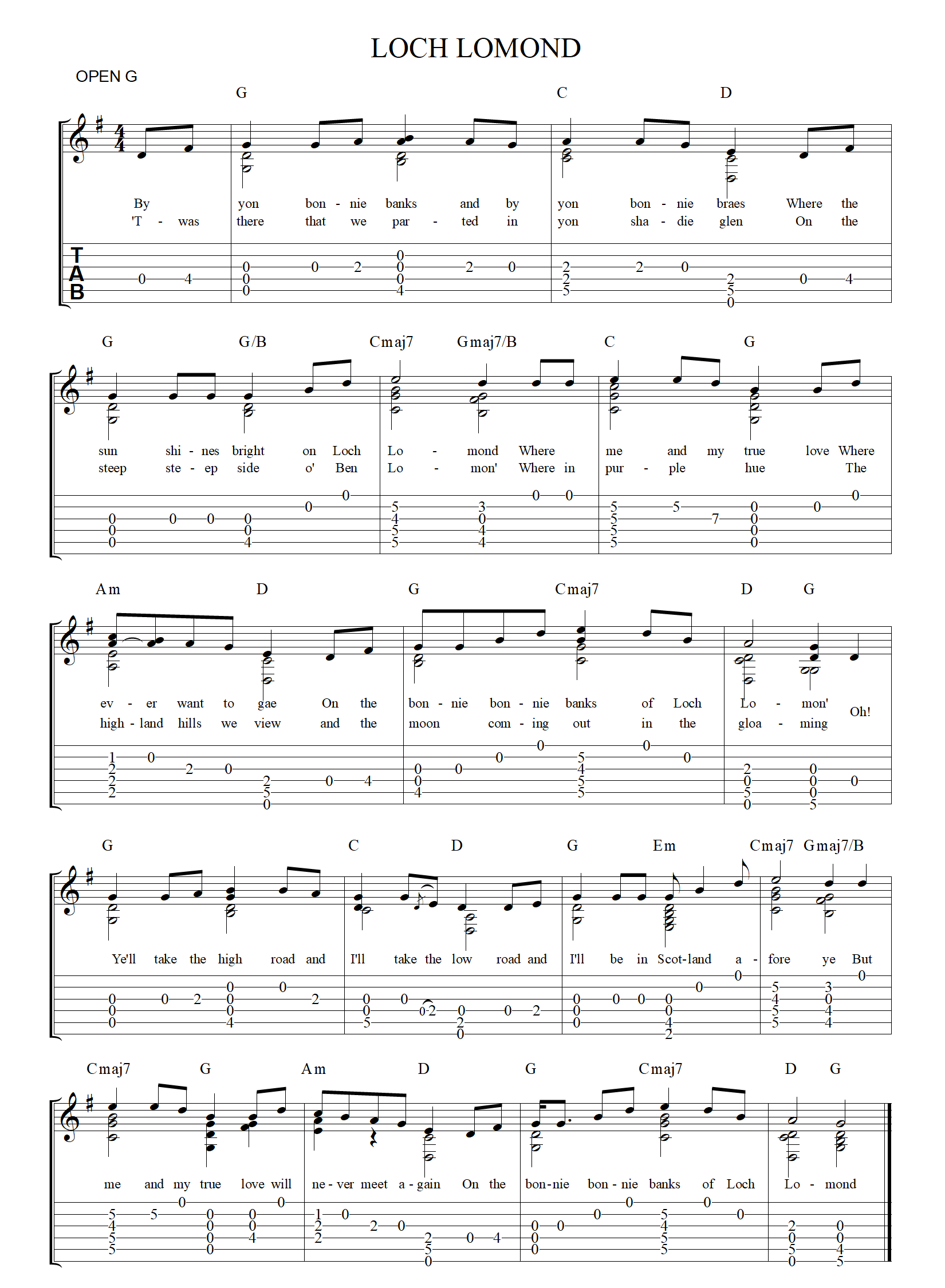
Open G Chords in Loch Lomond
I suggest studying the chords and getting the fingerings firmly in your grasp to successfully play this arrangement. Notice the major 7ths chords. A few substitute chords are used to give the arrangement a more contemporary sound.

The Loch Lomond arrangement follows a typical balance of melody and chords. Still, you can always add more drone notes and ornament the melody for variety.
More Altered Guitar Tunings
Open G is a very popular tuning for blues and some rock tunes and, of course, standard for resonator players. However, the resonator tuning usually is G B D G B D. Open tunings on the guitar truly open up a world of new possibilities.
Other common tunings for guitar are Open D, DADGAD, and Open E. Check out our open tuning chord posters and books for more information.
Please leave any suggestions for new guitar lessons or comments for this post.
101 Blues Riffs and Solos in Open D Guitar Tuning
Take your Open D guitar playing to the next level with “101 Blues Riffs & Solos in Open D Guitar Tuning.” The most complete instructional book ever written exclusively in DADF#AD tuning. Using a combination of slide, fingerstyle and pick playing, you will cover all the bases needed to develop a solid technique in open D guitar. Everything you need to master the blues with essential lessons in DADF#AD guitar tuning!
• Master the Blues in Open D Guitar Tuning
• Slide, Fingerstyle and Picking Riff and Solos
• Traditional, Delta, Rock, Funk and Jazz Blues
• Extensive Scale, Chord, and Arpeggio Charts
• A Complete Course for Open D (DADF#AD)
• Audio Tracks Below
Classical Guitar Book in Open D Tuning
45 New Arrangments for Classical Guitar Players in Open D Tuning
• Tablature, Notation, Fingerings, and Performance Markings
• 24 of Giuliani’s right-hand technical exercises arranged for Open D
• Scales, arpeggios and chords to master the fingerboard
OPEN G (DGDGBD) Guitar Tuning Chords
The OPEN G (DGDGBD) guitar tuning chord poster displays 48 of the most popular chord shapes with a large convenient master fingerboard reference chart. An excellent reference for creative guitarists exploring the world of open guitar tunings. For an alternate version of this Open G poster go here.
Are you interested in Open G Guitar Tuning (DGDGBD)? Well then you have to check out this lesson for an excellent introduction to Open G Guitar!
OPEN D (DADF#AD) Guitar Chord and Fingerboard Posters
This two-poster guitar chord set is an excellent reference for creative guitarists exploring the world of altered tunings in Open D tuning (DADF#AD).
The Open D Guitar Christmas Songbook
The Open D (DADF#AD) Guitar Christmas Songbook has thirty-holiday favourites and a 40-page Open D reference with Tab, chords, and more.
Celtic Flatpicking Open D Guitar Tuning
Celtic Guitar Flatpicking in Open D Guitar. Tuning your guitar to DADF#AD or “Open D” tuning compliments Celtic guitar music perfectly. 30+ Celtic session tunes and songs. Jigs, reels, songs, hornpipes, waltzes, plus useful tips for Flatpicking and ornamentation. DADF#AD chords and arpeggios, Celtic strumming patterns, Campanella major, minor and modal scales, plus a DADF#AD fingerboard chart.
